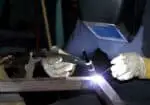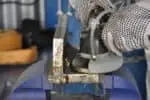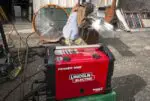Being the two most important welding methods, no discussion about welding is complete without mentioning MIG and TIG. In fact, majority of the topics are related directly to these.
Today, I am going to answer for you one of the most important and interesting questions involving these two most commonly used techniques in welding.
Yes, it is possible to do MIG and TIG with the same machine with the aid of multi-process welders. Or, you can go for modification on a standard welder made for a particular method and convert it suitably for the other. However, in this case you need to sacrifice certain elements that make up a good weld.
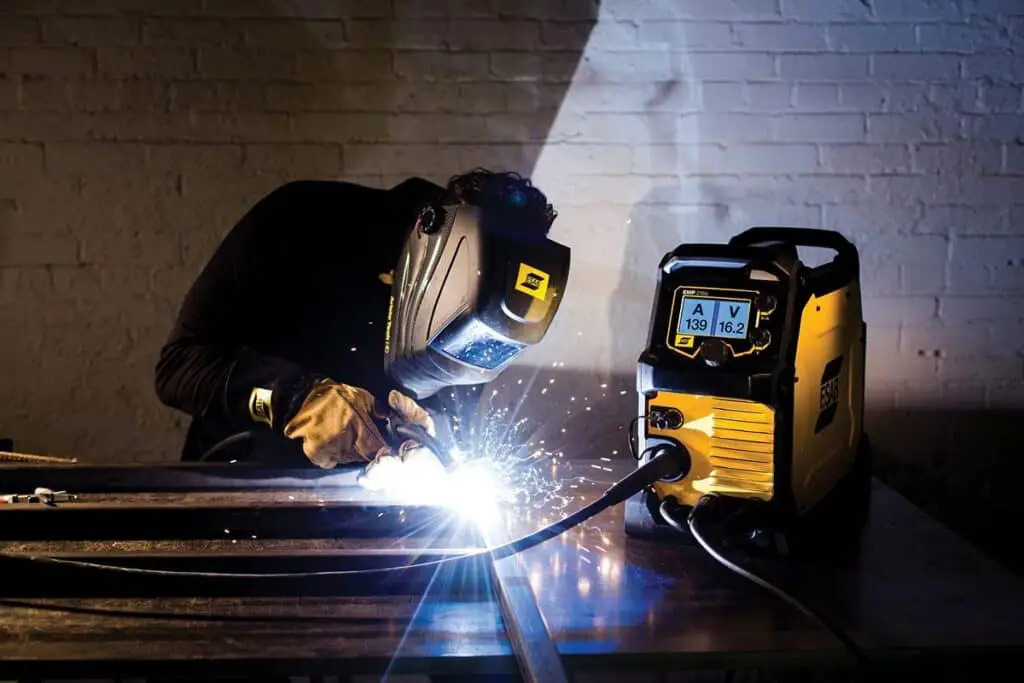
This article will cover almost everything that you need to know about the topic. Read further and see for yourself!
Is it safe to do MIG and TIG with the same machine?
Well, this question can have different answers depending on the situation. As I mentioned in the beginning, doing MIG and TIG without any danger in the same machine is possible if you are using a multi-process welder.
A multi-process welding machine offers flexibility to the welder allowing him to do different welding methods using the same machine. The different methods do not limit themselves with TIG or MIG but go on to include stick welding as well.
Most of the welders come in this combo of 3-in-1 while some others also offer flux core welding, plasma cutting and arc welding.
These machines are therefore well equipped with the settings that are demanded by each method. You can easily convert the welder from one to another by altering the settings as and when you require.
It is with the standard welding machine that the question of safety and finishing comes into play. I will tell more about it later in this article.
See also: MIG Vs TIG Welding Aluminium
What are the pros and cons of multi-process welding machines?
Useful as they may seem, multi-process welding machines come with their advantages and disadvantages. Let’s see each of them:
Pros
1.) Portable: Being flexible and having all the sophisticated settings do not make all the multi-process welders heavy. Some multi-process welders are lightweight and easy to carry. So do not hesitate to make them your traveling buddy in your next welding adventure.
2.) Compact: These light machines are compact too. These little things do not eat up much space and are ready to be placed in any corner of your house or a vehicle. You do not have to bother about them taking up space unlike the traditional standard welders.
3.) Saves Money: Well, this is something that needs no explanation. Going for welders of specific methods will obviously cost you more than these multi-process welders.
If you check the websites that sell these, you can see how a single multi-process welder will cost one third of the price for all specific standard welders together.
4.) Friend of beginners: Yes, that is right. These small things are the best welding gurus for the beginners. Newbies in welding can have their best welding lessons and get to know each method from one place. This can help the person to learn without wasting time going in search of different machines for different methods.
5.) Flexible: As these machines are designed to serve different purposes, the tools are flexible in nature, meaning the same tool can do different tasks. Multi-process welders therefore have a very well thought-out setup.
6.) Versatility: As their sole purpose is to enable different forms of welding, versatility is the synonym for these machines.
Cons
1.) Expensive: Now this may seem contradictory to a pro that I mentioned above. Well, that is not the case. You can save money with these compact machines but their cost will always be higher than a standard welder that serves a single purpose. As they are a complete package the cost is justified.
2.) Heavy: Even when some multi-process welders are your travelling buddies not all can give you the same feel. Especially, if you are going for the non-latest ones; they are heavier and cannot be carried easily.
3.) Power limitation: When it comes to power generation these machines are on the downside. Unlike standard welders, these machines’ capability to generate power is low.
While the former with their huge size come with a duty cycle of 100% the latter’s approximately 25%, which is very low. This means the actual time that you get to weld is very limited.
4.) Risk of overheat: Less power generation is the primary reason why these little things tend to overheat. As the amperage is low, you cannot continue using them beyond a limit or else you will have a pretty hot machine overworked and exhausted. With big machines, this is never a botheration.
5.) Expensive to repair: They are made of technical stuff that are highly sophisticated and of good quality. So, please be careful while dealing with these very useful yet complicated machines as they can cost you with their small yet costly repairs. Once damaged, they need to be replaced with the same quality product that was there in the first place.
6.) Compromised quality: No matter what, these machines are never the ideal welders. Their weld quality is not the same as what a standard welder provides. With the complicated system and flexible tool all that you can expect from these are mere satisfactory welds.
7.) Bye to Aluminum: TIG weld is the most preferred method to weld aluminium. The problem here arises because most multi-process welding machines offer TIG on DC and not AC.
For a good weld of aluminium AC is a must. Alternating current helps the weld in staying clean. So with these you will have to give up welding aluminium and go for the conventional ones.
How to pick the right multi-process welder based on my requirement?
Ha! Now this is where it becomes tricky. Getting to know about these machines is sure a fun way to learn the possibilities in welding but, when it comes to choosing the right one, it is quite a pickle! I will break it down for you and help you in choosing the best multi-process welder with the following points.
1. Primary purpose matters the most
Without doubt you buy a multi-process machine mainly for its versatility. But always keep an eye for that particular method of welding that you do the most. Make sure that the machine you choose is best for that particular method. Others can take the second seat.
2. Go for the branded ones!
Yes, you do not want to get cheated with the fake promises right? Then you should definitely go for the branded multi-process machines. Hobart, Lincoln and Miller are only a few to name.
The branded machines work as the description says while the others are exactly the opposite. The most deceptive area is where they mention the amperage. Often the users of the non-branded ones realise the bitter truth that the amps do not reach the level that they claim in the first place.
3. Build Quality
Having a sturdy and robust nature is essential for these machines. As they are there to help you in a rigorous process like welding, make sure that the quality of the external and internal parts are top-notch. Otherwise, you would not know how easily they drain your pockets with the frequent repairs needed.
4. Look for special ones.
Try to find those multi-purpose welders that have an AC option for TIG. With this, even aluminium can be handled smoothly. The more features they have the better.
5. Dual voltage is essential
Most of the multi-process welders come with an amperage capacity that is not suitable for thick metals. Dual voltage can help you here. Hence keep an eye for the ones that provide the best amperage. Don’t cave in for the second best when you can always choose the best!
6. Display is a priority
Make sure that you buy these machines after checking how clearly the settings can be read using the display screen. Knowing the clear set up before welding is of utmost importance. You do not want to get it all wrong just because you failed to notice the settings, do you?
7. Overload Protection is a must
Versatile as these machines are, the current consumed by these devices at times for a long duration can cause overload. An overload protection feature can prevent such accidents and prevent wear and tear.
8. The lighter the better
Well this goes without saying. A machine that is lightweight is always the best choice. With the numerous welding applications that you have and the amount of places that you have to go, the machines you choose need to be lightweight and portable.
Best multi-purpose machines available in the market
Given below is a list of the popular multi-purpose machines in the market that you can grab today!
1. Weldpro 200 Amp Inverter Multi Process Welder
- MIG, Stick or TIG weld all from a single compact, space-saving unit.
- Dual digital display easy to read and set amperage and wire speed for repeatable welds every time.
Prices pulled from the Amazon Product Advertising API on:
Product prices and availability are accurate as of the date/time indicated and are subject to change. Any price and availability information displayed on [relevant Amazon Site(s), as applicable] at the time of purchase will apply to the purchase of this product.
Want to taste the pleasure of the machine doing half the setting? Then look nowhere else. This is the product for you! With its unique synergic design, setting up the welder will be a piece of cake. This feature makes the learning process and getting your tasks done easier than ever before!
2. Everlast Power Equipment PowerMTS
- All digital DC CC/CV Multi-Process inverter design offers the perfect welder for nearly every task.
- Light weight design makes the unit extremely portable, ideal for jobsites and motorsports.
- Easy to use, operator friendly panel to select features.
- Adjustable Arc Force Control allows the user to dial in desired Stick welding performance.
Prices pulled from the Amazon Product Advertising API on:
Product prices and availability are accurate as of the date/time indicated and are subject to change. Any price and availability information displayed on [relevant Amazon Site(s), as applicable] at the time of purchase will apply to the purchase of this product.
Compact and lightweight, this machine can accompany you anywhere you go. The display is clear and is user friendly. Covering almost all types of major weld methods, this device can be your friend in no time!
3. Forney Easy Weld 140 MP
- EASY TO USE
- CONTROL YOUR WELD
- RUGGED
- WELDER INCLUDES- 10 MIG gun, 8 electrode holder, 8 ground clamp, Integrated handle with torch wrap, 20A - 15A adapter and one additional .030 contact tip. Backed by a 12-month warranty
Prices pulled from the Amazon Product Advertising API on:
Product prices and availability are accurate as of the date/time indicated and are subject to change. Any price and availability information displayed on [relevant Amazon Site(s), as applicable] at the time of purchase will apply to the purchase of this product.
This 3-in 1 multi-process welder can help you in the process like no other. All parts are made of supreme quality and the well built exterior gives a sturdy look to the device. With its easy initiation process you will fall in love with this machine instantly.
4. Lincoln POWER 210 MP
- Lightweight and portable–just 40 lbs.
- Dual Voltage Inputs (120V or 230V)
- Intuitive push-and-turn digital controls make setup a breeze
- Large color display guides you through the setup process. Advanced options and settings are simple to access
- Includes Magnum PRO 100SG Spool Gun (K3269-1)
Prices pulled from the Amazon Product Advertising API on:
Product prices and availability are accurate as of the date/time indicated and are subject to change. Any price and availability information displayed on [relevant Amazon Site(s), as applicable] at the time of purchase will apply to the purchase of this product.
This welder is a synonym for versatility. With its well-built body you can definitely go for a weld experience that is close to perfect. Coming with dual voltage inputs all you have to do is find a common power supply and the smart guy is ready to go!
5. Miller Multimac 220 AC/DC Multi Process Welder
- Country of Origin : United States
- Package dimensions : 29.0 L x 20.0 W x 19.0 H
- Package weight : 94.0 Lbs
- Package quantity :1
Prices pulled from the Amazon Product Advertising API on:
Product prices and availability are accurate as of the date/time indicated and are subject to change. Any price and availability information displayed on [relevant Amazon Site(s), as applicable] at the time of purchase will apply to the purchase of this product.
For a smooth MIG and TIG weld this machine is the best. This small blue welder can work wonders in creating that smooth weld you are rooting for. The preset features along with portability make it the ideal choice.
6. ESAB EMP215IC 120/230-Volt Dual Voltage
- Esab rebel 3-in-1 wel
Prices pulled from the Amazon Product Advertising API on:
Product prices and availability are accurate as of the date/time indicated and are subject to change. Any price and availability information displayed on [relevant Amazon Site(s), as applicable] at the time of purchase will apply to the purchase of this product.
This multi-process welder is especially known for the smooth TIG welding it offers. Without the usual troubles and obstacles this machine can aid you in the process. A unique feature of this machine is that you can alter induction on the fly while you MIG weld. Ha! Now that’s something, ain’t it?
Is it possible to do TIG welding with a MIG welder or vice versa?
You already know how TIG and MIG work. TIG uses tungsten non-consumable electrodes to melt metal whereas the latter uses a consumable metal wire to create a joining between two metals.
MIG has a slight edge over TIG with the ease of work and the less stressful work environment. A standard welder machine is used to weld in these techniques, each made to serve the particular purpose.
However, there are also ways in which a machine of a particular method is converted to another. But this takes certain sacrifices and you might need to be satisfied with not-so-satisfactory weld that you get.
Both conversion from MIG to TIG and vice-versa is possible. But, the latter is more prevalent among the welding society. Given below is the link to a popular YouTube video that demonstrates how to convert a MIG welder to TIG.
And this is a video that shows how to TIG weld with a MIG welder.
For a perfect weld using the standard welder is the best choice. When you convert a welder from one to another there tends to be flaws in weld as the basic characteristics of both methods differ.
The table shows what are the major differences that matters in conversion
| Elements | TIG | MIG |
| Gases used | Inert gas | Active gas |
| Thickness tolerance of metal | Only thin | Thick and thin |
| Metals to be joined | Only similar | Both (similar and dissimilar) |
| Speed | Slow | Fast |
Are you able to see how the problem arises? A standard machine that is developed in a way to do, for instance MIG weld will be having specifications for that kind of weld and when you make modifications, the result will not be perfect.
As a learner, this is one of the ways in which you can get accustomed to both the methods. But, for real work I would not recommend this way.
Is the conversion from MIG to TIG in industrial robot arms the same as normal welding conversion?
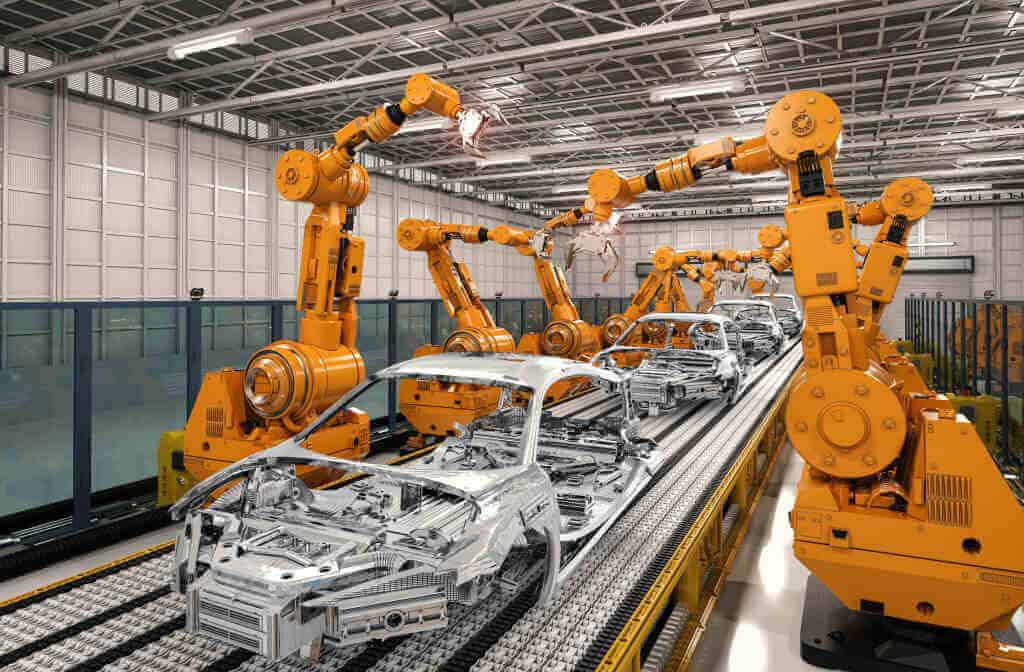
No, they are not the arms of transformers although they look like that. Industrial robot arms are the machines that are used in big industries to assemble parts of big products like automobiles. Welding is therefore an important feature that these arms need to do.
Conversion from MIG to TIG and vice versa happens quite frequently with these arms. Depending upon the metals welded, or the technique required, adopting the right method at the right time matters a lot for these industries. But the change is pretty simple as the arm just replaces the welding components as and when required.
Welding wire, torch, feeder and clutch are just a few among these components. Similarly, depending upon the metals to be welded the shielding gases are also replaced.
EndNote
Thus, getting TIG and MIG to be done with the same machine is never an impossible thing. Either you go for the technically advanced method or go for your own manual modifications.
Benefits and disadvantages are part of both. However, for a perfect smooth weld with a good weld profile, you will have to go for a standard conventional welder.
Well that is it for now. Feel free to visit other blogs and explore more about welding!
Have a happy day!








